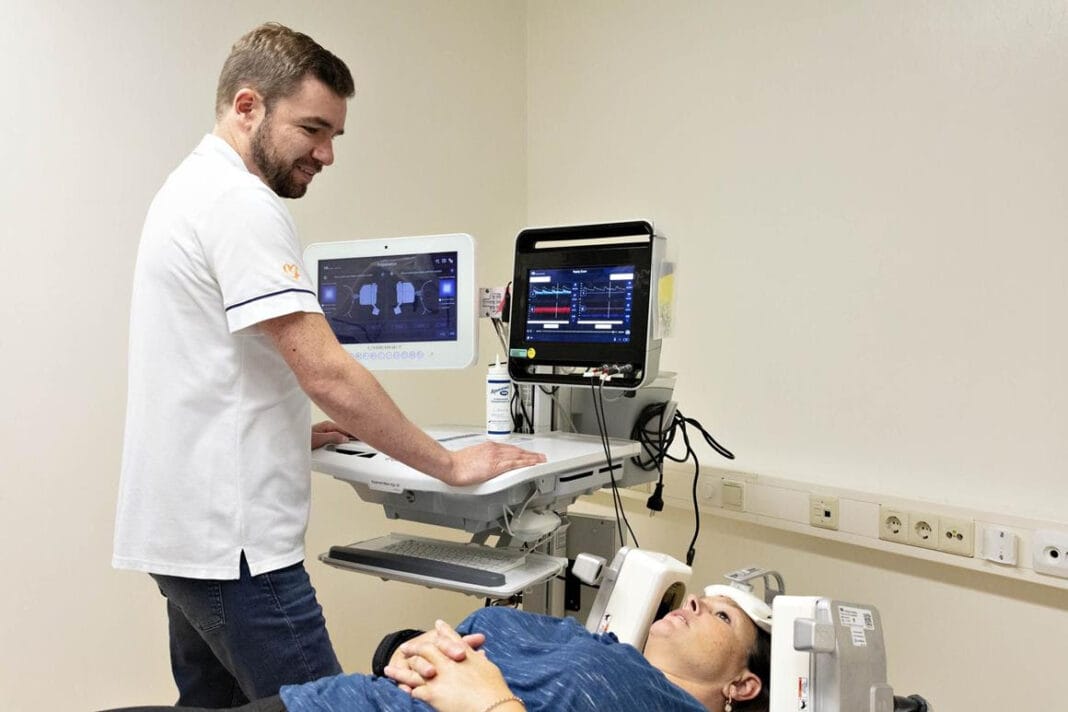New method saves time and that increases the chance of recovery
At Maastricht UMC +, research is currently being conducted into the use of a special ultrasound robot to quickly detect clogged blood vessels in the brain. The device is independently able to image the blood flow of the large brain vessels within a few minutes and to determine whether a blood clot is present.
A blocked blood vessel in the brain requires rapid action. A diagnosis can be made in various ways, with a CT scan being the gold standard. However, this is a costly method that can only be performed in a hospital. The sooner a decision can be made about a blockage, the better, as this can change treatment options. If it is possible to detect a blockage of a cerebral vessel already outside the hospital, this can significantly reduce the time to treatment and thus increase the chance of recovery.
Sound waves
An alternative method of detecting a blockage in the brain is by ultrasound. In addition, sound waves are used to check whether the blood flow in the large brain vessels is still intact. If the sound waves do not return a signal, this is a sign that, for example, a blood clot is present. Normally, such an investigation is carried out by a trained laboratory technician, but the mobile ultrasound robot can change this by doing the detection independently within a few minutes.
Compare
The method is quite simple. The patient places his head on a stand and stickers are applied to both sides. The ultrasound machine is placed against it. The robot then uses sound waves to search for the large blood vessels. As soon as the robot detects a blood flow via the ultrasound machine, it optimizes the signal. If the robot receives a signal from both sides, then there is no blockage. “We give the robot no more than five minutes for this,” says neurologist Rik Houben (see photo) of Maastricht UMC +. “If he gets an echo signal from only one side, we know that something is very likely to be wrong.” The conclusions of the robot are compared in a research context with the results of a CT scan and manual ultrasound examination. Houben: “At the moment we only test with patients who come to the Emergency Department or the vascular room, but if the ultrasound robot can actually prove its added value, the next step is to use the device in the ambulance. After all, time is crucial. ”
| Source: Maastricht University Medical Center + |
–


